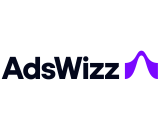There is a privacy thrust to Mood Targeting. Adswizz notes that the digital advertising field is transforming around consumer privacy protections. “Adapting perspectives on targeting and context represents a crucial approach for advertisers to stay relevant while upholding privacy standards in this evolving environment,” AdsWizz says. “Through Mood Targeting, advertisers can connect with the most relevant audiences using privacy-conscious contextual signals.”
AdsWizz lays out four key benefits of Mood Targeting:
- Increased Relevance – Tailor your message to fit the context and make your campaign more effective.
- Wide Reach – Access the AdsWizz library of over 60 million songs categorized into nine Mood segments to connect with the right audience.
- Accurate Reporting – Evaluate your campaign’s performance based on the Mood segments you target to make informed decisions.
- Future-Proof Targeting – Reach your ideal audience using privacy-friendly signals.
This Sounds Familiar…
How is mood determined as a data quality? Adswizz’s answer to that seems to hark back to Pandora’s legacy breakthrough music analysis algorithms:
“It all starts with a machine learning algorithm that meticulously evaluates various elements of each song, including its harmony, rhythm, sound, and more, to determine the presence or absence of specific moods. Next, a dedicated team of music analysts reviews and validates the initial automated categorizations, further refining the associations made by the algorithm.” –AdsWizz
That sounds a lot like Pandora’s legacy human/algo hybrid music analysis tech. Pandora acquired AdsWizz in 2018 (RAIN coverage HERE), and in that context it might be a little surprising that the mood-related song targeting technology — originally applied to listeners — hasn’t been extended to adtech until now. (Both companies are owned by SiriusXM.)
At any rate, the new announcement (originally made at CES) lists off several “mood segments”: Angsty, Chill, Energetic, Focused, Happy, Soothing, Love, Celebratory, and Relaxed. AdsWizz says that “having this array of Mood segments leads to a stronger connection with the audience.”

